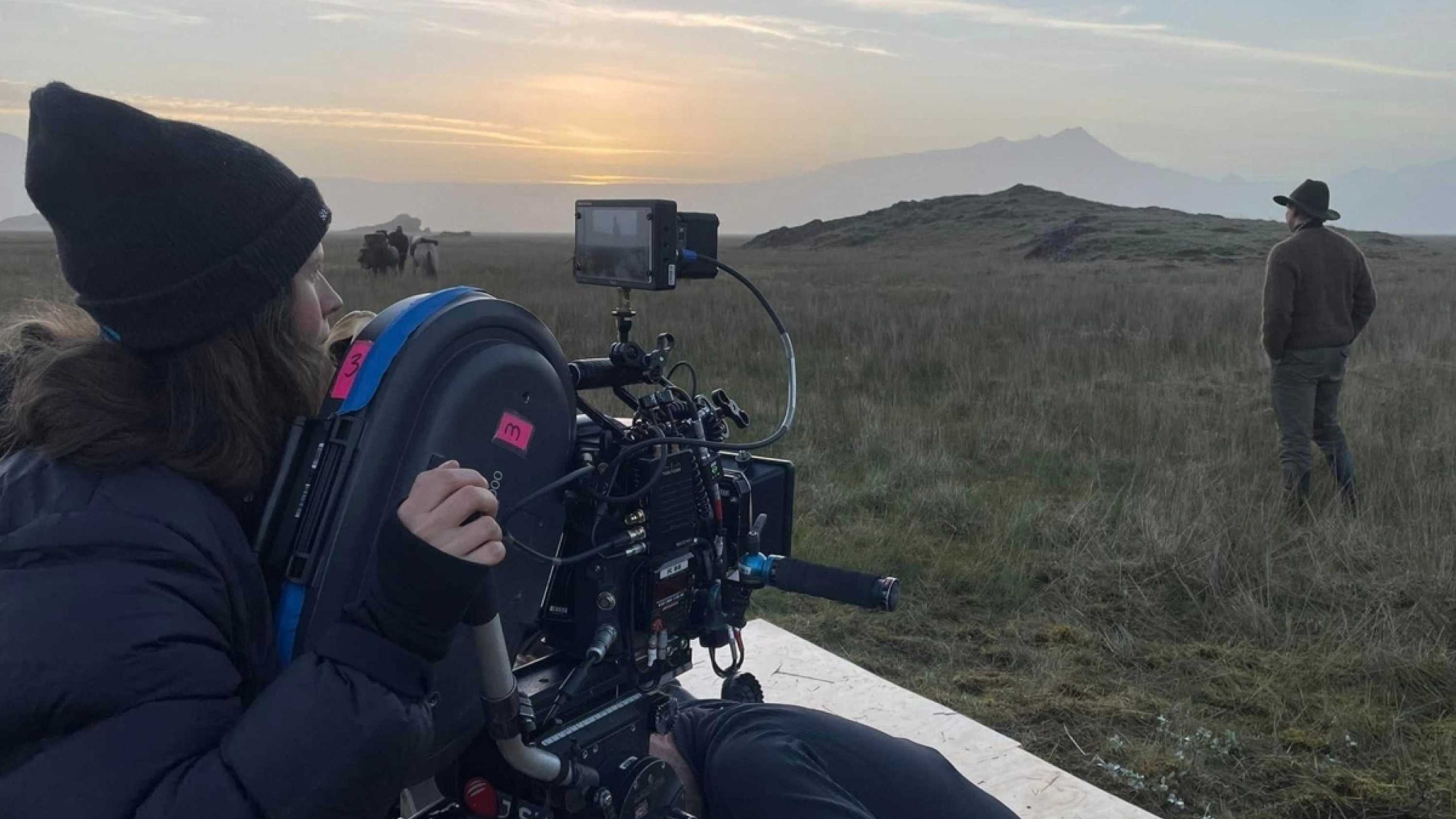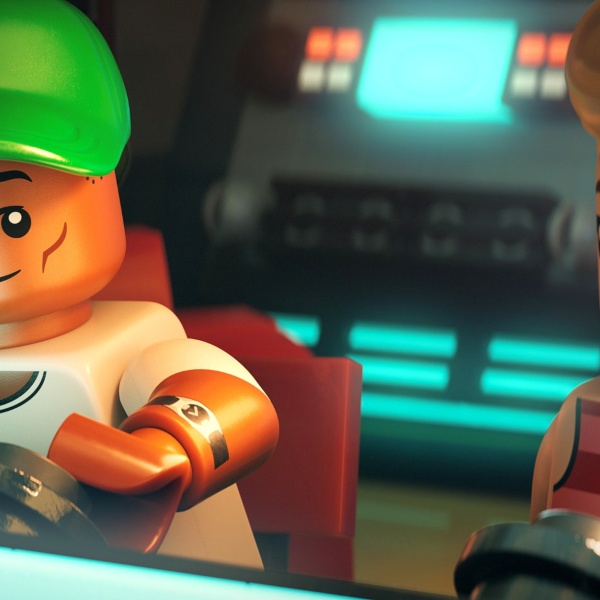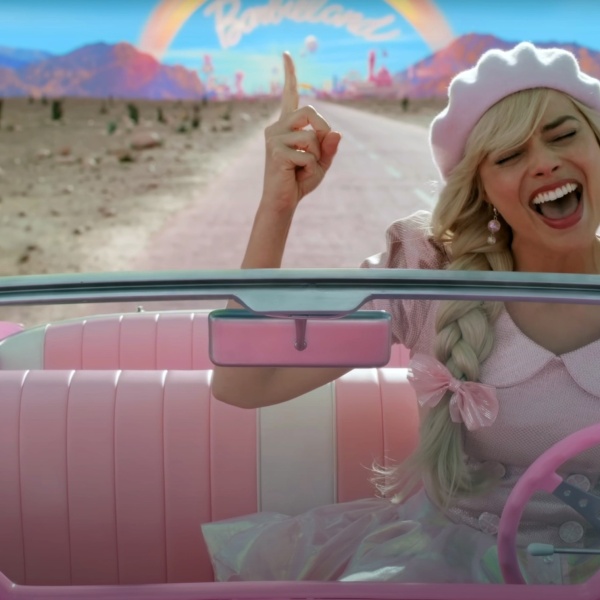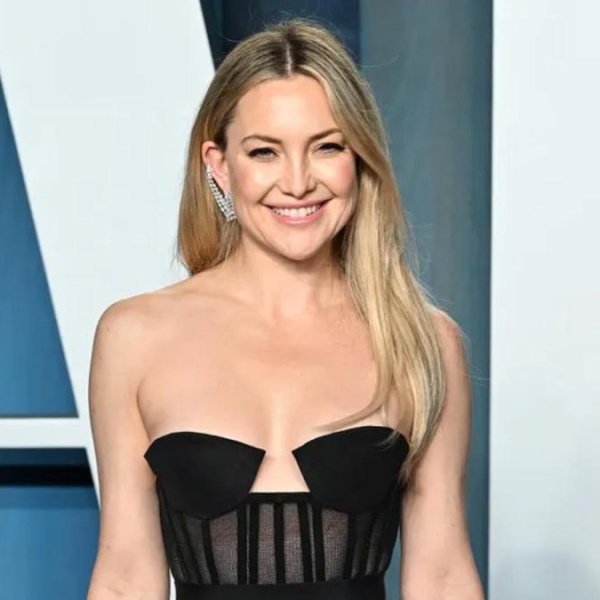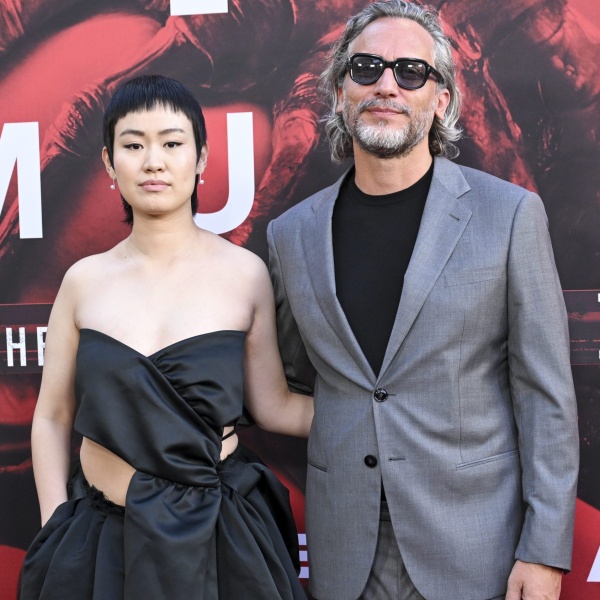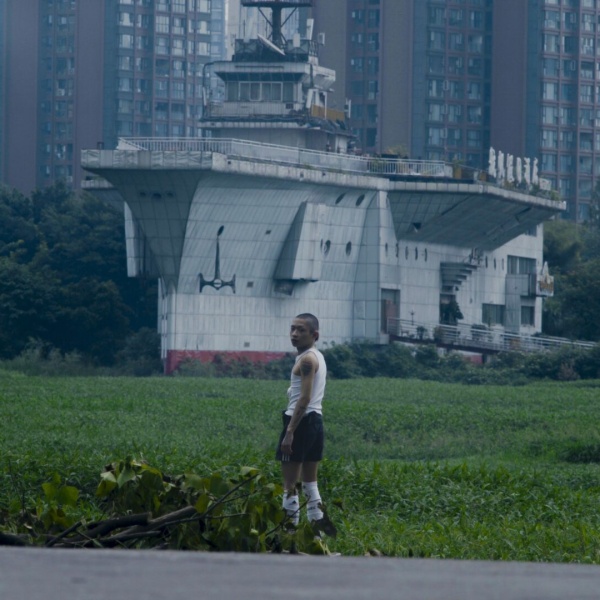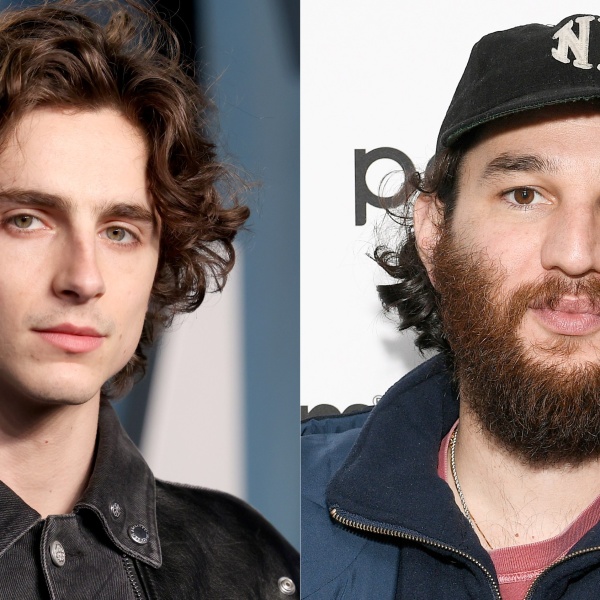As the fall festivals come to an end and the 2024 awards race begins to come into focus, IndieWire reached out to the directors of photography whose films are among the most critically acclaimed of the year. We wanted to find out which cameras and lenses they used and, more importantly, why these were the right tools to create the visual language of their respective films.
All films are listed alphabetically by title.
-
“All Dirt Roads Taste of Salt”

Image Credit: Courtesy of Filmmaker Dir: Raven Jackson, DoP: Jomo Fray
Format: 35mm
Camera: ARRICAM LT
Lens: ARRI Master PrimesFray: We wanted to create an image that was deeply tactile and elemental in its design. Before I even read the script the director, Raven Jackson, told me she was dreaming of this film in 35mm. In a way, shooting on film for us embodied a holistic approach to the work. It gave us the tactile feel and texture we were looking for but also forced us to have a certain level of intention with each image we created. We crafted an artistic manifesto for the film that we read at the start of each day together. We wanted the light and camera to feel naturalistic and paired down to its most elemental component parts — and we wanted our tools to reflect those values. Shooting on the Arricam LT with the Master Primes gave us the ability to be nimble and quickly adapt to changing conditions. I love the way the Master Primes render on film. They have a soft naturalism that immediately drew us both in.
-
“All of Us Strangers”

Image Credit: Parisa Taghizadeh Dir: Andrew Haigh, DoP: Jamie D. Ramsey
Format: 35mm
Camera: ARRICAM ST
Lens: ARRI Master PrimesRamsey: This movie, from the very first discussion with the director, needed to have a subtle nostalgia that was indicative of the analog era of the ’80s/’90s, like looking at a family picture or listening to a record. It was immediately apparent that 35mm was the right choice because of its inherent organic treatment of tone and highlight.
-
“Anatomy of a Fall”

Image Credit: Carole Bethuel Dir: Justine Triet, DoP: Simon Beaufils
Format: ARRIRAW Open Gate 4.5K
Camera: ALEXA Mini LF
Lenses: Anamorphic Hawk V-LiteBeaufils: Justine had the feeling that it would be great to shoot this story on film. All her references, even in still photography, were from film footage. We made camera tests, 35mm in 2 Perfs, Red Monstro and Alexa LF with different types of old lenses. With the 35mm as a reference we built a LUT and finally felt good with Alexa LF + Hawk V-lite. We cropped a lot in the sensor, enhanced the anamorphic’s aberrations (even if the aspect ratio of the film is 1.85 we chose this anamorphic’s particular look) in order to feel “the material” more, to push the grain, distortions, out of focus in the edge of the frame and flares. All kinds of “accidents” were welcome!
We worked with the same philosophy on the lighting, using some rough big entries of light from outside and almost nothing inside, making it a space where actors could be free to move, and play with light. This my third film with Justine but each time we’ve taken a new approach to shooting, it was really exciting!
-
“American Fiction”

Image Credit: Claire Folger Dir: Cord Jefferson, DoP: Cristina Dunlap
Format: 4.5K ARRIRAW
Camera: ALEXA Mini LF
Lenses: Tribe 7 BlackwingsDunlap: With our main character being named Thelonius “Monk”, I knew from the beginning that I wanted the camera to have a rhythmic flowing motion to it that is, like jazz, partly planned and partly spontaneous. Weaving its way through our characters, I wanted to orchestrate unique blocking and coverage, while leaving room for improvisation from the incredible ensemble cast. Shooting in 2:35 aspect ratio allowed us to do this without feeling too wide and distant from our characters. While the central visual motif was built around the isolation of Monk, we did not want the audience to feel disconnected from him; so even though we were shooting in the 2:35 aspect ratio we chose to shoot on spherical Blackwing lenses. The Blackwings render skin tone beautifully and have a much grounded look that I hope allowed the viewer to lose themselves in the story and at times fall into Monk’s subjective point of view.
While the film does sometimes veer off into more surreal scenarios it was important to Cord and I that there was always something relatable in our visual storytelling.
-
“Asteroid City”

Image Credit: Courtesy of Robert Yeoman Dir: Wes Anderson, DoP: Robert Yeoman
Format: 35mm film – Kodak Vision 200T 5213 for color, Kodak Double X black and white 5222 for the black and white
Camera: ARRICAM ST and ARRICAM LT
Lenses: Cooke S4 lenses for the spherical scenes, ARRI Master Anamorphic lenses for the anamorphic scenes.Yeoman: Wes and I have used the Cooke S4 lenses on a few of our previous movies and like the look, particularly how they render faces. I like the Arri Master Anamorphic lenses because they hold focus across the entire image, whereas many anamorphic lenses fall off along the edges. I know that Wes often places many actors in the frame, and I did not want those on the side of frame to be soft.
-
“Barbie”

Image Credit: Jaap Buitendijk Dir: Greta Gerwig, DoP: Rodrigo Prieto
Format: ARRIRAW
Camera: ALEXA 65 and ALEXA Mini LT
Lenses: System 65 from PanavisionPrieto: The large sensor of the Alexa 65 gave us the feel of a big camera on a miniature set. During testing in prep, I compared many different sensors and lenses, and we found that the depth of field with the Alexa 65 felt more similar to test shots of an actual Barbie doll shot with a Super 35 size sensor. We wanted Barbie Land to feel “innocent” and “authentically artificial” and the combination of that camera with the System 65 lenses gave us what we felt was the most simple yet magical feel.
The lenses are clean but not hard and were flattering to the actors’ faces. We also created a special LUT for Barbie Land, based on films from the ’30s, ’40s and ’50s, shot on 3 Strip Technicolor. Greta loves many musicals from that era, which we reference for shooting style, sets, and color. We called our LUT “Techno Barbie,” which enhanced our pinks, cyans, greens and yellows but left skin tones natural.
The camera also behaves in a simple, mechanical “perfect” way, in contrast to the “real world” in California, where the camera moves feel more random, in a way that enhances Barbie’s realization that there is a beauty to imperfection. For that part, we used the Alexa Mini LT with a “normal” film LUT for natural colors and a more regular depth of field. The result is a visual contrast between an artificial world where the characters feel like perfection is totally normal, and a real world where serendipity and messiness are integral parts of life.
-
“The Bikeriders”

Image Credit: Kyle Kaplan Dir: Jeff Nichols, DoP: Adam Stone
Format: 35mm Anamorphic
Camera: Panavision Millennium XL2
Lenses: Panavision G-SeriesStone: My work with Jeff Nichols is grounded in a wildly simple philosophy. We love to use film and Panavision equipment to capture naturalistic imagery. When it came to “Bikeriders,” our commitment to this ethos was strong. We wanted to breathe life into Danny’s gritty docu-style photographs through celluloid. However, there were challenges. Filming actors on motorcycles demanded a lot of planning. Maneuvering large camera systems around talent on bikes was daunting. Countless hours were invested in refining the camera rigs to convey the raw emotions of riding a motorcycle at speed. My hope is “Bikeriders” encapsulates the visceral spirit of the gang and the authenticity in Danny’s book.
-
“The Boys in the Boat”

Image Credit: Sam Strike Dir: George Clooney, DoP: Martin Ruhe
Format: Sony Venice 6K 3:2
Camera: Sony Venice 1 and Z-Camera
Lenses: ARRI Alfa AnamorphicRuhe: “Boys” is a classic story about underdogs going for the impossible. A big part of the story takes place on the water, in all kinds of boats. We needed a small and very versatile camera set up. Yet it needed to be epic for this larger than life story. That is why we chose the Sony Venice and the Alfa anamorphic lenses. Sometimes we worked with the Rialto system. For special rig shots we mounted Z-Cameras on to the boat and used Leica M lenses for those shots.
George and I decided very early on the anamorphic format, it was ideal for the long boats and all the races. It was clear that we wanted lenses with a lot of character and the large format Alfas were just the right choice.
-
“Cassandro”

Image Credit: Alejandro Lopez Pineda Dir: Roger Ross Williams, DoP: Matias Penachino
Format: ARRIRAW 4.5k
Camera: AlEXA Mini LF
Lenses: Panavision H SeriesPenachino: From the outset, it was evident that, given the script’s nature as a biopic, the film should take on the characteristics of a portrait. The majority of the film featured either the main character in the frame or focused on scenes where he was actively involved, not just as an athlete but also as a man deeply immersed in the emotional turmoil of his battles, both inside and outside the wrestling ring.
To achieve this vision, we utilized the flawless and stunning H series on FF (full-frame) to emulate the aesthetics of medium format still photography in a semi-square format. This choice also entailed setting specific parameters for camera angles and height, often maintaining a near-zero-degree angle when capturing Saúl (Cassandro) and aligning the camera’s height with that of a human observer. Additionally, our camera approach drew inspiration from Roger’s background in documentary filmmaking, emphasizing an observational style that allowed the audience to immerse themselves in the character’s life without excessive narrative intrusion. We strategically moved the camera only when necessary, preferring to maintain a sense of stillness that reinforced our decision to portray him from an outsider’s perspective.
When it came to depicting the wrestling matches, along with Alberto Ojeda the camera and steadycam operator, we devised camera movements and angles rehearsing and learning from the wrestlers, but particularly Gael, who did a tremendous job, ensuring that we remained as close as possible to the action. This approach aimed to maintain focus on the main character while respecting the unique visual language of lucha libre itself.
-
“La Chimera”

Image Credit: Helene Degrandcourt Dir: Alice Rorhwacher, DoP: Helene Louvart
Format: 35mm, Super 16mm, 16mm
Cameras: ARRI 35 LT, ARRI 416, Super 16mm, Bolex 16 mm
Lenses: ARRI Ultra PrimesLouvart: To mix 35mm and super 16mm film was a sort of challenge for Alice and me. The difference should be perceptible, but not too “obviously done.” We decided to keep the super 16mm for the daily life of Arthur, a British archeologist, and to choose the 35mm for the Etruscan’s references, a way to link the present and the past with the Etruscan civilization.
-
“The Color Purple”

Image Credit: Eli Ade´ Dir: Blitz Bazawule, DoP: Dan Laustsen
Format: ARRIRAW
Camera: ALEXA mini LF
Lenses: ARRI Signature PrimesLaustsen: Large Format is fantastic. Since the depth of field is so precise and the background is softened very organically, the actor’s eyes and expression come forward in a very powerful way. The opposite happens when you shoot large landscapes, where you instead can enhance the smallest detail. My first idea was to shoot “The Color Purple” on Alexa 65 as A camera (like I did on “Nightmare Alley” with Guillermo del Toro). However, on “The Color Purple,” I was concerned that the Alexa 65 would be too big on the small sets, so I decided to go for Alexa LF MINI. My preferred lenses for Alexa LF MINI are Signature Primes, fantastic lenses that never give me problems and have a great close focus.
The only problem with the large format camera and these lenses is that it becomes too sharp for my taste. Therefore I always shoot with a diffusion filter that makes close-ups more organic. I don’t want to have a diffusion filter in front of the lenses, as I don’t like filter flare but do like lens flare. On Signature Primes, it’s possible to set the diffusion filter behind the lens, attaining a diffused highlight while still keeping the black black, so this is what I regularly do.
When Blitz and I discussed the look of the film, it was very important to us to capture the warmth of the South, the warmth of the actors and the warmth in Paul Austerberry’s sets. That’s why I decided to go with incandescent lighting, using 24 K Dinos, 20 K Fresnells, 10 K Fresnells and as little as possible of modern LED lights.
-
“El Conde”

Image Credit: Courtesy of Netflix Dir: Pablo Larrain, DoP: Ed Lachman
Format: 4K ARRIRAW
Camera: ALEXA Mini LF
Lenses: UlLTRA BALTARS that were created to cover a large format of the LF sensorLachman: Implementing the language of vampire films with its psychology, we looked at the seduction and the misuse of power, how politically, culturally, and socially our blood is taken literally by yielding to fascism portrayed as a dark satirical comedy. To that end, I retrofitted BALTAR lenses called ULTRA BALTARS to cover a monochromatic LF camera developed by ARRIFLEX. I was also aided by the EL Zone system, which is an exposure mapping system to interpret and control the latitude and detail of exposure. In highlights to shadow detail. These three devices created the overall look of “El Conde.”
-
“Ferrari”

Image Credit: Courtesy of Neon Dir: Michael Mann, DoP: Erik Messerschmidt
Format: X-OCN
Camera: Sony Venice 2
Lens: Panavision PanaspeedMesserschmidt: With “Ferrari” Michael wanted the audience to feel, viscerally, what it was like race these cars. I think for Michael his camera is an extension of our characters and what’s happening dramatically in the screen. We wanted the film to have a textured, almost painted feel. Dan Sasaki at Panavision build us the most beautiful set of lenses that give the film just enough texture and depth to accomplish our look. love the internal filtration of the Sony Venice and I knew they would help me with Michael’s shooting pace. I could keep the iris where I wanted it without disturbing the actors or the action with filter changes.
-
“Fingernails”

Image Credit: Keri Anderson Dir: Christos Nikou, DoP: Marcéll Rev
Format: 35mm film
Camera: ARRICAM LT
Lenses: Zeiss B-speedsRev: We wanted to create a timeless organic look that felt intimate. Film is just the medium I usually go to because I feel it’s the medium closest to how I see the world, but here it was even more important to have an analog quality to the movie. The lenses are older spherical glasses that felt like a nice additional quality to the image without it being too big of a statement and getting in the way of the story.
-
“Foe”

Image Credit: Crystal Shin Dir: Garth Davis, DoP: Mátyás Erdely
Format: ARRIRAW
Camera: ALEXA 65
Lenses: ARRI Rental Prime DNAErdely: Our original idea was to shoot on 35mm film, but there is no film lab in Australia, and our budget did not allow us to send negatives to L.A. With the huge help of Russell Allen from Arri Rental, we managed to get an Alexa 65. We did extensive tests to compare the Alexa LF with the Alexa 65, and when we watched our tests on the big screen, it was obvious that the Alexa 65 was the right camera to tell this story. We knew that we would explore the nuanced performances from our actors in close-ups and we also knew we would be shooting the amazing landscapes of Australia. For both of these purposes the large format of the Alexa 65 was perfect.
-
“Godland”

Image Credit: Juliane Lalinde Dir: Hlynur Palmason, DoP: Maria von Hausswolff
Format: 35mm, Kodak (50D,250D,500T)
Camera: ARRICAM LT, Arriflex 435, 4 perf, 1.33:1 aspect ratio
Lens: Zeiss Super SpeedVon Hausswolff: I feel a very close connection to the camera when I shoot on film. When Hlynur and I started our collaboration, it turned out he loved film as well, so since then, we have worked with different types of film. When he sent me the script, he knew it was a 35mm movie. “Godland” is shot close to where he lives in Iceland, and he had the opportunity to test and try out different formats for some years before we started the shoot. When reading the script, looking and discussing footage he had shot of the decaying horse and Lucas in the landscape, we both agreed on the aspect ratio 1.33.1. It resonates on many levels with the film; the time period, how we frame, the way we look at the landscape, the way we portrait people, the way Lucas sees the world through his old wet plate camera. The advantage of shooting with the Arricam LT was its light weight. Like Lucas our protagonist, we had to do a lot of hiking in very rough and extreme terrain with limited access for transport and crew. The Arriflex 435 was mostly used for the long sequences with the decaying horse and Lucas, but we also used it a few places in the film when we needed to split up and shoot with two cameras, like places where the horses could only walk by once because of its difficult path or when Lucas and the translator had to be in the cold waterfall for a limited time period. The Zeiss super speed lenses were a great match with how we had to grasp the way of filming both visually and practically. They are small and fast, with a look I like. The film is almost entirely shot outdoors daytime, evening and nights. It was interesting to work with such a precious high quality like 4 perf, and at the same time mainly be working with natural light, in this harsh environment with very unpredictable weather shifts. It gave the lens and celluloid a great boost of imperfections, underexposures, dust, rain and moisture.
-
“The Holdovers”

Image Credit: Courtesy of filmmaker Dir: Alexander Payne, DoP: Eigil Bryld
Format: ARRIRAW
Camera: ALEXA Mini
Lenses: Zeiss SuperspeedsBryld: “The Holdovers” is set in 1970, and we wanted it to look like it was actually made back then, not treat the period aspect as window dressing. The Super speeds are of the period but not overly funky or showy. We were not looking for a period application, but those are the lenses I would have picked if we were indeed shooting the movie back then. We did test 35mm and 16mm and digital and ultimately settled for Alexa Mini as we would have had to give the image the curve and structure of period filmstock-neg and print anyways, even if we originated on film. We built extensive LUTs with Joe Gawler at Harbor Lab, simulating curve, color, density plus aging. Furthermore, in post, we applied halation, dirt (neg and pos), gate weave, and selective grain, more so when we would have pushed the film stock, less so in bright circumstances. More than anything, we tried to embrace and live the spirit of filmmaking in the era rather than merely replicating technical specs. That is ultimately what sets it in its time.
-
“Infinity Pool”

Image Credit: David Lukacs Dir: Brandon Cronenberg, DoP: Karim Hussain
Format: 2K ProRes 4444
Camera: ALEXA Mini
Lenses: Canon K-35s, Angenieux 25-250 Zoom Vintage 1970’s “Lucky Pierre,” Helios 44, Laowa 12mm, Laowa Macro Probe 24mmHussain: Shooting at 2K ProRes 4444 then blowing up to 4K for theatrical and video, using softer vintage lenses such as the Canon K-35s and my old 25-250 zoom lens nicknamed “Lucky Pierre” gave us a soft, dreamy look without having to resort to diffusion. We shot everything at 1280 ISO to have a natural grain embedded in the files so it didn’t feel like a layer added on top of the image. All the hallucination scenes were done live and in-camera without CGI, using projections, dichroic film draped over the lenses and hand-held split field diopters. The idea was to have the movie feel as organic as possible, which is possible with digital if you use the right formulas.
-
“The Iron Claw”

Dir: Sean Durkin, DoP: Mátyás Erdély
Format: 35mm film, 5219 and 5222 Kodak
Camera: Panavison XL, ARRI 235 — fight scenes
Lenses: Panavision Primo Primes and ZoomErdély: With Sean we always chose film for our projects. We just love the way it looks and feels.
For “The Iron Claw,” we wanted something timeless, elegant, and something that is quintessentially American. We felt that using film with the Primos gave us the texture and feel we were looking for. We did not use any filtration besides the 85 and NDs, to differentiate between different time periods in the ring we used different light levels and exposures to create different contrast and saturation levels that were emphasized later in the grade. We used 5222 double X to separate the prologue (1950s) from the rest of the film.
-
“John Wick 4”

Image Credit: Murray Close/Lionsgate Dir: Chad Stahelski, DoP: Dan Laustsen
Format: ARRIRAW
Camera: ALEXA Mini LF
Lenses: ALFA AnamorphicLaustsen: When we were about to make “John Wick 4,” we knew that we had to and wanted to bring everything up to a new level: action, colors, camera movement, and set design. On 2 & 3, we used Alexa Mini and Master Anamorphic lenses, with fishing lines behind the lens to create lens flare, which worked really well for them. Now we wanted to lift the visuals up to a new level, so I wanted to use the Alexa LF mini with ALFA Anamorphic lenses. I love large format. The color palette needed to be bolder and more dynamic, so I chose to use 90% LED light, a mix between Vortex 8 (which we used most) and Sky Panels 60 and Sky Panels 360.
We wanted to shoot the film in a classical manner, bringing forth Keanu Reeves’ amazing stunt performance. As Keanu does most of his stunts himself, it was very important to us to follow him and his action with a moving and precise camera, in long takes with Steadicam and crane shots, less handheld. The long action takes are like a ballet, with Chad’s vision, Keanu’s performance, and the camera movement in total sync.
-
“The Killer”

Image Credit: Monaris/Netflix Dir: David Fincher, DoP: Erik Messerschmidt
Format: Red Code Raw 6k
Camera: Red V-Raptor and Red Komodo
Lenses: Leica Summilux-CMesserschmidt: The bulk of the conversations David and I had regarding the photography of “The Killer” surrounded the structure of the scenes and the resulting camera direction. We didn’t discuss how the film would look per se — we discussed how he wanted the audience to experience the film, the dramatic structure of the scenes, and the pacing. This all leads to lens choice and format. We had had great experiences with the Leica Summilux on both “Mindhunter” and “Mank” and I knew the lenses well. I love the simplicity and elegance of the Super 35 format and we both agreed it was right for the film. We thought it would be interesting to explore the idea of putting the camera close to a person who lives amongst us but never has anyone truly close.
-
“Killers of the Flower Moon”

Image Credit: Courtesy of Apple Dir: Martin Scorsese DoP: Rodrigo Prieto
Format: 35mm Film and Sony Venice OCN-XT 4K Anamorphic mode 4K
Camera: ARRICAM ST and LT, 1917 Bell and Howell camera, Sony Venice, Phantom camera
Lenses: T Series Anamorphic, Petzval AnamorphicsPrieto: We wanted to capture the natural colors of nature and the Oklahoma landscape for the scenes where the Osage characters are not around descendants of European immigrants. Film negative has the deepest color depth, and we knew this would be the best way to photograph these moments.
To contrast with this natural color, we created a LUT for the scenes involving white people, based on color photography of the time (the 1920s), emulating Autochrome (invented by the Lumière Brothers around 1907). Two-thirds into the film, we switched the LUTs to an emulation of ENR, with its high contrast and reduced color saturation. This helped evolve the look of the story to a harsher, more contrasty look that mirrors the deepening conflict the characters are experiencing. For the epilogue of the film, which happens in the 1930s, we created a LUT that emulated Three Strip Technicolor since that was the way audiences would see movies in color at that time.
The Sony Venice camera was used for dusk and night exterior scenes. This allowed me to shoot in low light conditions and extend the hours of dusk. The T Series Anamorphic lenses were adapted by Dan Sasaki at Panavision to give us a more “period” look, with warm flares and slightly softer rendition. We also used anamorphic Petzval lenses for certain shots where we wanted the edges of frame to present distortion and slight vignetting. These were used for a number of shots of murdered Osage. The hand-cranked 1917 Bell and Howell camera, owned by Scorsese, was used to shoot the “newsreel” shots in the film with Black and White Double X negative.
-
“Maestro”

Image Credit: Netflix Dir: Bradley Cooper, DoP: Matthew Libatique
Format: Three primary Kodak film stocks were used: Eastman Double-X 5222 for our black and white scenes portraying LB and Felicia’s early years, and for scenes in color, Vision3 500T Color Negative Film 5219 was selected for interiors while Vision3 200T Color Negative Film 5213 was favored for exteriors. There were also specific instances where we employed the VISION3 250D Color Negative Film 5207, a medium-speed daylight-balanced film.Cameras: “Maestro” was primarily captured using two Panaflex Millennium XL cameras, with an additional Panaflex Millennium XL camera dedicated for Steadicam shots.
Lenses: Our lens choices leaned heavily on Panavision Vintage Prime lenses: The 29MM T1.2 PVINTAGE Ultra SPEED lens was a favorite, followed closely by the 35MM T1.6 PVINTAGE Ultra SPEED. Other frequently used lenses included the 24MM T1.2 PVINTAGE Ultra SPEED, 50MM T1.0 PVINTAGE Ultra SPEED, and 21MM T1.9 PRIMO. Occasionally, for specific visual requirements, we also employed the 75MM T1.6 PVINTAGE Ultra SPEED, 100MM T1.6 PVINTAGE Ultra SPEED, and both the 40MM T1.9 PRIMO SPECIAL OPTICS and 40MM T2 NORMAL SPEED. The 27MM T1.9 PRIMO and 65MM T1.8 PRIMO SPECIAL OPTICS were used more sparingly, as were the 135MM T2 ZEISS SUPER SPEED (PV). There were also moments where we opted for lenses that were Angenieux, with variable focal lengths, such as “15-40” and “28-76,” but these were rare.
-
“May December”

Image Credit: Francois Duhamel Dir: Todd Haynes, DoP: Christopher Blauvelt
Format: ALEXA 35 open gate 4.6k 1.85 aspect ratio
Camera: ALEXA 35
Lenses: Kowa Cine ProminarBlauvelt: With Todd’s reference material and image book, we pulled together a lot of different lenses, cameras and filters to see what would work for our aesthetic. We shot in the camera house to get a broad idea and later into our locations to really see how these different recipes might work in our environments. So with as many details as we could give it to have the feel of the film (costumes, art department, hair and makeup), we would screen these tests in the theater to really scrutinize the looks and eventually found what we liked. This ended up being the Alexa 35 with the Kowa spherical glass and some filtration.
-
“Napoleon”

Image Credit: Courtesy of Apple Dir: Ridley Scott, DoP: Dariusz Wolski
Format: 4K ARRIRAW
Camera: ALEXA mini LF
Lenses: Panavision 65 vintage and Angenieoux EZ zooms, Panavision 11-1 zoomWolski: I have used the same lens package and camera for several movies before, and they served me well. I love the quality of lenses, and I didn’t see the need to experiment any further.
-
“Nyad”

Image Credit: Kimberley French/Netflix Dirs: Jimmy Chin & Elizabeth Chai Vasarhelyi, DoP: Claudio Miranda
Format: 8.6K 17:9 X-OCN, 5.8K 17:9 X-OCN, 4K ProRezRaw
Cameras: Sony Venice 2 and FX3 to Atomos Recorder for Prorez Raw
Lenses: ARRI Master Primes and Fuji ZoomsMiranda: The FX3 with the Atomos Ninja recorder was used for all the underwater photography. The camera size was perfect for underwater photography. We could be much nimbler and get shots that a normal movie camera in a large housing could not.
The Sony Vence 2 works really well with low light. I wanted the red strip to light the characters. The Venice 2 saved me here because water really absorbs the red channel much more than expected. I also wanted the boat to be the primary source for lighting at night. I spent a ton of time working on the lighting practicals for the boat to light the actors.
For me, the look is to feel natural. I wanted the audience to feel we shot this in the middle of the ocean with Annette swimming the course.
-
“Oppenheimer”

Image Credit: Courtesy Universal Pictures Dir: Christopher Nolan, DoP: Hoyte van Hoytema
Format: 65mm 15-perf (IMAX) and 5-perf
Cameras: IMAX MKIV, IMAX MSM 9802, and Panavision Panaflex System 65 Studio
Lenses: Hasselblad, Panavision Sphero 65, and Panavision System 65 lensesVan Hoytema: This was a three-hour-long movie about faces. And our challenge was to be able to get closer with the camera to make those faces become our landscape, and to make those faces interesting enough for the audience to become captivated by them.
-
“Past Lives”

Image Credit: John Pack Dir: Celine Song, DoP: Shabier Kirchner
Format: 35mm 3-perf
Camera: Panavision XL2
Lens: P vintage, Panavision Ultra speeds, Primo ZoomsKirchner: During the early stages of pre-production, Celine and I discussed the conceptual ideas behind “Time” and “Love” and how to best bring those qualities to the image in harmony with the script. 35mm film naturally became a deep part of our conversations and, eventually, our philosophy when developing the visual language of the film. We push-processed the entire picture by at least +1 stop and, in some cases pull processed -2 stops in order to achieve the desired feeling in the contrast, grain, and overall softness. Panavision worked with us on putting together the perfect set of lenses needed to frame the characters’ faces as our landscapes.
-
“Perfect Days”

Image Credit: Courtesy of Franz Lustig Dir: Wim Wenders, DoP: Franz Lustig
Format: 4K OCN ST
Camera: Sony Venice 2, Rialto 6K sensor, Aspect 1:1.33
Lenses: Canon K35 TLS rehousedLustig: “Perfect Days” is a film about humility and simplicity, therefore, I wanted to keep everything super light and easy. We prepped this 2-hour film for five days and shot it in 17 days, so it had quite a documentary approach sometimes.
We had two camera bodies on standby, but it was a one-camera show. We had the normal camera body for handheld/Easyrig shots and one Rialto body for mounts and when we had a lack of space. We didn’t even carry a dolly, just some sliders occasionally. I had the most lovely local crew and we also kept the lighting to a minimum, all on house power and no big light sources. It was a beautiful, unique experience. Yoshi Yakusho’s acting was just so touching and special.
In the grade we tried to emphasise the 4:3 aspect ratio and the filmic look with some grain and quite saturated colours. I think it looks real but also somehow from a different time. I’m quite proud of this “little” film we did together.
-
“Poor Things”

Image Credit: Atsushi Nishijima Dir: Yorgos Lanthimos, DoP: Robbie Ryan
Format: 35mm / Vista Vision
Camera: ARRICAM ST, ARRICAM LT, Beaucam vista vision
Lenses: Zeiss master zoom 16.5-110mm, petzval 58 mm, 85mm zeiss 10mm /4mm optex, 8mm nikkorRyan: “Poor Things” is shot on film, and it is the most important aspect to the cinematography. We shot mainly 35mm black and white 5222 and color 5219. We also shot Ektachrome 35mm 5294, which we processed in Andec Laboratories Berlin, one of the only labs that can actually process reversal anymore! The results are beautiful. Long live film!
-
“Priscilla”

Image Credit: A24 Dir: Sofia Coppola, DoP: Philippe Le Sourd
Format: 4.6 K ARRIRAW-1/85
Camera: ALEXA 35
Lenses: Ultra Speed PanavisionLe Sourd: “Priscilla” is a story that covers multiple decades and our first instinct was to shoot it on film, but we quickly opted for the Alexa 35 paired with vintage Ultra Speed Panavision lenses to bring a softer look. This lens can be used to evoke certain emotions creating a sense of intimacy.
This was my first film in digital! I shot all my previous films in film. Shooting in digital allowed us more flexibility in production. When I started researching the project, I began watching a lot of Super 8mm footage of Elvis and Priscilla and, of course, the colors stood out so much in this period. Eggleston’s Kodachromes were also a big inspiration for Sofia and me. The question was: Are we obliged to shoot the ’50s, ’60s and ’70s as they were translated by the film stock at that time? For sure this is part of our collective memory, and it’s true the colors were pastels and later on, they shifted towards brighter, more vibrant colors.
Our goal was to maintain a consistent look throughout the various periods, spanning from 1950s Germany to 1970s Memphis. We wanted the audience to experience each moment with Priscilla in a genuine, real and unfiltered manner rather than through a nostalgic vision. Digital definitely opened doors for us since it gave us this direct interpretation on set of our creative vision. We allowed ourselves to experiment and be more spontaneous. The harmony of the talent, lighting, production design, locations, and costumes is really what makes the final image. In the end, it was this harmonious blend that truly brought “Priscilla” to life on screen.
-
“Rustin”

Image Credit: Kharen Hill Dir: George C. Wolfe, DoP: Tobias Schliessler
Format: 4.4K ARRIRAW
Camera: ALEXA Mini LF
Lenses: ARRI Rental DNA LFSchliessler: Because of the important subject matter, it was crucial for director George C. Wolfe and I that the audience feel completely immersed in the film without being distracted by an aesthetic that felt too “period” or overly stylized. We shot “Rustin” with the Alexa Mini LF, as the large format allowed us to use wider lenses (29mm, 35mm) for intimate close-ups of the actors without distorting their faces. I chose the DNA LF Prime lenses, which are made out of vintage glass, as they have a naturally softer look with beautiful contrast. These gave us the closest look to film while still shooting on a digital camera. Shot wide open, they have a pleasing focus fall off, especially around the outer edges, which draws the audience’s attention to the character’s faces and performance.
I also love the amount of color information in ARRIRAW, which helped us to create true and accurate skin tones with our DI colorist Stefan Sonnenfeld. Additionally, the 2.40 aspect ratio was incredibly helpful for framing large groups of actors in the majority of scenes that played out in relatively small spaces. Beyond the technical details and creative choices, my hope is that by finally telling this important historical story, “Rustin” inspires us to all be committed, peaceful advocates for racial and sexual equality.
-
“Saltburn”

Image Credit: Courtesy of Prime Dir: Emerald Fennell, DoP: Linus Sandgren
Format: 35mm film
Camera: Panaflex XL2
Lenses: Panavision Primo primesSandgren: We had a voyeuristic theme, and we liked it to feel as if we were observing the characters like in a doll house. We composed and blocked many scenes like the family at Saltburn Estate had been portrayed for centuries in the oil paintings on their walls, and other times we shot close-ups of skin, eyes, sweat, as well as of events in the film where we did not want the audience to look away. All these reasons combined made us decide on the 1.33:1 aspect ratio.
The quality the 35mm negative delivers in color rendition, the contrast abilities, in combination with the undercorrected spherical aberration and the colors and contrast in the beautiful Primo primes, helped us take the visual themes for the lighting, all the way from hot summers to foggy scenes inspired by Gainsborough, to dramatic lighting inspired by Hitchcock, silent horror movies, and by baroque painters like Gentileschi and Caravaggio.
-
“A Thousand and One”

Image Credit: Courtesy of Focus Features Dir: A.V. Rockwell, DoP: Eric K. Yue
Format: 3.2K
Camera: ALEXA Mini
Lenses: Panavision Super Speeds and Panavision PrimosYue: We shot the film with two sets of lenses: Panavision Super Speeds and Panavision Primos. The ’90s section was shot with the vintage Super Speeds wide open with a 1/8 Black Pro Mist, for a softer and grainier image. The 2000s section was photographed with Primos without filtration at T2.8 or higher, which produces a cooler, sharper, and crisper image. Their world becomes colder and darker as the two become distant from each other and their surroundings over the years. I wanted to use vintage and modern lenses to subtly suggest an emotion and temporal shift in the visual language.
-
“The Zone of Interest”

Image Credit: Courtesy A24 Dir: Jonathan Glazer, DoP: Łukasz Żal
Format: 6k 3:2 X-ocn st
Camera: Sony Venice with Rialto extension
Lens: Leitz M 0.8Żal: Sony Venice with Rialto extension is the smallest camera available in the market, and our priority was to have the smallest. There were 10 cameras shooting at the same time, hidden in furniture or in walls; however, they could see each other, which required removing them in post. To make it as easy as possible, we chose cameras that, with the entire equipment (Rialto extension and lenses), were the smallest. When it comes to lenses, we used Leitz M 0.8, firstly because we wanted to look at Germans through German lenses, and secondly because they are modern, sharp in look but still cinematic. We didn’t want to use any vintage lenses not to aesthetize Auschwitz. Sony Venice also has very low noise, even at ISO 3200, this was crucial for the shoot as we didn’t use any additional lighting, only practicals and natural light.
